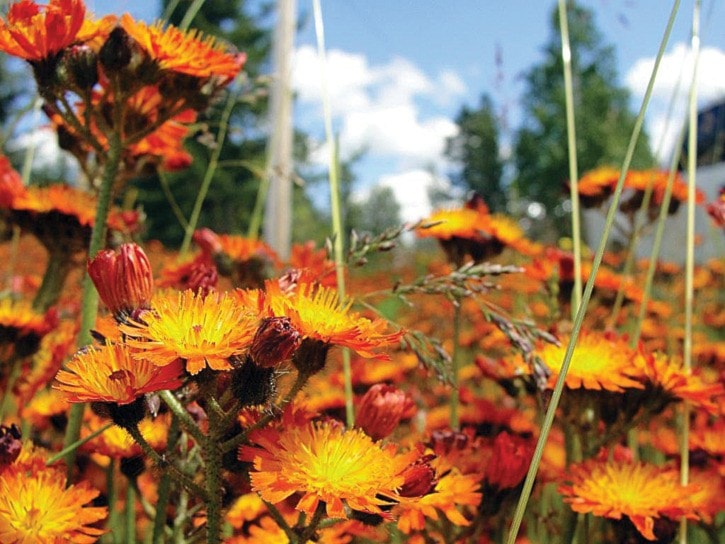Are you seeing orange? It’s that time of year again. Roadways, lawns and pastures throughout the Cariboo Chilcotin have turned a bright shade of orange due to blooming Orange Hawkweed.
Hawkweed was alleged to be introduced to North America from its native home in Europe. The ancient Greeks believed it gave the hawks that fed on it keen eyesight.
The colour of this plant’s flower is what makes it stand out from every other plant. They are brilliant red-orange colours that grow in clusters at the top of leafless stems. The entire stem and leaves are covered in small, stiff, black hairs.
Orange Hawkweed has the ability to establish quickly by seed, above ground stems (stolons), and below ground stems (rhizomes), allowing it to form dense patches that displace native vegetation.
Each flowering stem can be self-pollinated and may produce several hundred seeds. These seeds are spread by wind, water, and human activities. Once the seeds have sprouted, Hawkweed spreads rapidly by the above ground stems which produce new plants that form a dense mat of rosettes.
Early detection of these plants is critical. Once they form a large colony in an area they can be extremely difficult to control. Mechanical control of this plant is limited. Small patches can be dug up, making sure all parts of the root are removed. The smallest fragment left behind can sprout a new plant.
Therefore, repetition of this method may be necessary for the following years. Mowing of this plant may stop seed production but strongly encourages vegetative growth and is not advised.
Fertilization with a blend that contains higher amounts of sulphur or nitrogen has proven effective if the infestation is sparse to moderate.
Hawkweed tends to prefer soils that are deficient in both nitrogen and sulphur. Fertilization in general promotes a healthy desirable plant community that will resist invasive plant invasion. If the infestation is large and quite dense, the judicial use of herbicides can effectively control Hawkweed.
Look for herbicides containing active ingredients including Picloram, 2-4-D, Dicamba, Aminopyralid, or Clopyralid, but always remember to read the label before using and always follow the instructions for application.
If you have any questions or concerns about Orange Hawkweed or need some assistance in identification or management, please contact the CRD’s Invasive Plant Management department at 250-392-3351 or toll free at 1-800-665-1636 or visit the CRD website.

